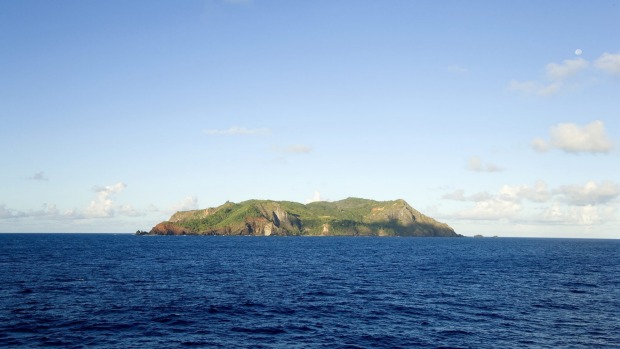
Seventh-generation Bounty mutineer descendant Kerry Young eases his way carefully along a sheer, rocky ridge line with all the steadiness of a mountain goat. He balances himself carefully above the sweeping bay far below his cracked heels and then sits and stares out across the cobalt-blue sea that encircles his tiny island home.
"Some days I struggle," he says quietly. "Some days I think 'My god, it really is just water out there'."
But Young has not been off Pitcairn Island in almost nine years. He holds the record for the longest stint on Pitcairn without a break and that's fairly serious island time when you consider he lives on a five-square-kilometre volcanic outcrop barely four kilometres long at its greatest length. It is nearly 6000 kilometres from the nearest continent, and is home to less than 45 other inhabitants.
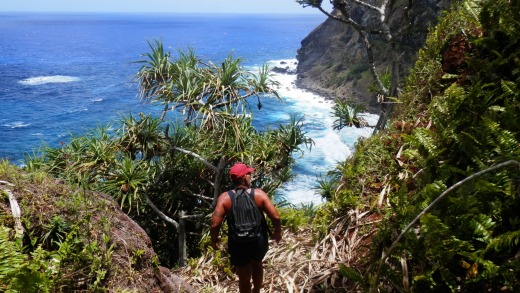
But getting off … and on … Pitcairn Island requires a Herculean effort. It is one of the world's most isolated islands. No plane or helicopter has ever landed there, nor has any ship ever moored off Pitcairn. Indeed, the island was only settled after the greatest unrecognised voyage of exploration in European history, by sailors whose sole intention was to disappear completely.
(Explore Pitcairn in 360-degrees via Street View below)
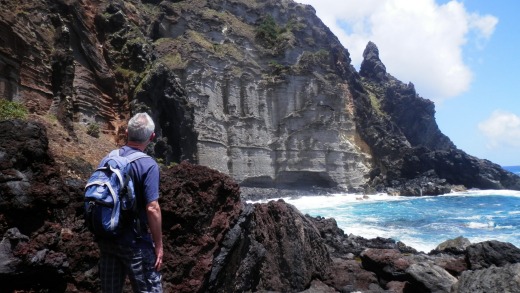
It took an intensive two-month search for the Bounty mutineers to find Pitcairn, an island chosen by mutiny co-leader Fletcher Christian when he recalled Captain Cook's unsuccessful attempts to find it. It was incorrectly charted by its European discoverer, Captain Philip Carteret, in 1767, 22 years before the Bligh mutiny. After a nine-month journey across the South Pacific, Christian eventually spotted Pitcairn Island in January 1790, and scuttled the ship in Bounty Bay (lest any passing ship spot it) dooming him and his men to drastically short, unhappy lives. Only one mutineer was still alive a decade after arriving on the island.
Though my journey here will be far shorter in duration, it does hark back to sea journeys of old. I'm flying from Tahiti to Mangareva in French Polynesia's remote Gambier archipelago, where the supply ship, MV Claymore II, waits at dock for its three-day, two-night voyage to Pitcairn Island.
Joining me at sea will be Pitcairn's new governor (the British High Commissioner to New Zealand), the island's new British administrator, two US-based seismologists, a doctor commissioned to conduct hearing tests on residents, a British marine biologist studying the world's largest marine park (which surrounds Pitcairn Island), and retired US army officer, Colonel Bill Mason.
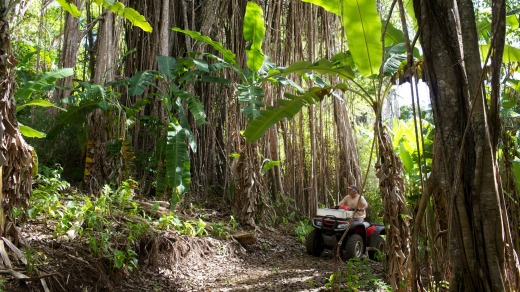
"I bet I've been to more places in Australia than you," Mason says by way of introduction on the ship's deck. Mason belongs to a traveller's club I doubted actually existed. He's travelled to 180 of 195 countries on Earth, and 282 of the 324 countries, islands and territories the most fanatical members of the Travellers Century Club will stop at nothing to visit. Few members will complete the task (only 19 ever have), some will die trying, or get arrested and thrown into foreign prisons. Mason's travelling on one leg, but knee replacement surgery in two months won't stop an old soldier. "We get a lot of those," Claymore's skipper Hamish Thorpe tells me later. "They all want Pitcairn (passport) stamps … doesn't seem to matter what it costs them."
The Claymore is no luxury cruise-liner, cabins are sparse and functional, hearty meals are served without fanfare – often in the crew mess if the sea's too violent – while in his safety briefing the first mate warns passengers (the governor included) not to s--- in the upstairs toilet. He also strongly advises we hold on tight. Big seas are expected on the 32-hour voyage: "If you go overboard, the skipper will decide if he'll risk other lives to save yours," he cautions.
Most of the passengers spend the next three days in their cabins as a five-metre sea lifts and rolls us right across the Pacific. On the final morning I wake to a sky still full of stars and edge my way to the bridge. The first pink hues of dawn haven't yet fully illuminated the horizon, but watch leader Eric Broughton's keen eyes spot land ahoy. "There it is, it's tiny … you don't understand just how bloody small it is," he says. As Pitcairn gets closer, I see none of the coconut trees or sun-kissed, white-sand beaches synonymous with the South Pacific. There's nothing but barren, rocky cliffs sloping down at right angles into an angry, churning sea.
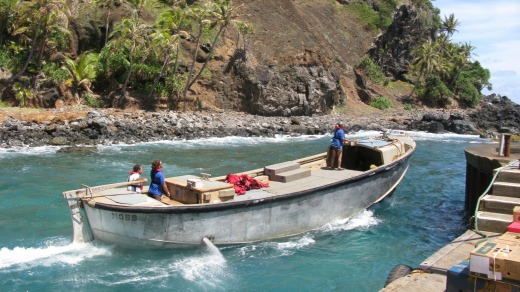
Thorpe orders the anchor out in the island's lee, though the ship still lifts and lurches on the swell. A longboat approaches on our port side. A team of Pitcairners prime themselves for their long practiced task. I can't help but stare, gawking as if they've appeared from outer space, not the tiny, pudding-cake-shaped island beside us. They tie up to the Claymore and load supplies, then they call for us … "p-a-s-s-e-n-g-e-r-s … r-e-a-d-y".
I'm taken to the side of the ship, and held tight like a piece of cargo. When the swell reaches its zenith I'm passed by my wrists across vessels to a tall, bearded Pitcairner and dumped without ceremony on the floor of the longboat as the bottom drops out of the ocean. We're cast adrift, our lives now in the hands of the descendants of the world's most infamous seafarers. Surf crashes against the coastline. Lonely Planet warns: "Landings on Pitcairn Island are notoriously difficult, it's not unknown to travel all the way there and then be unable to set foot on the island", while its discoverer, Captain Carteret, observed "… surf broke upon it with great violence". Even the island's official website states government responsibility "is not accepted for any death by accident during the process of landing or departing".
But just as it seems there's no way in past the breakers smashing onto the sharp, rocky shoreline, crew members scans the horizon, and yell in unison … "n-o-w". The skipper accelerates and follows a breaking wave in as it cascades into a narrow passage not visible from the sea. You couldn't call this a harbour, but to the Bligh mutineers this passage, Bounty Bay, represented the sweetest refuge in the Pacific.
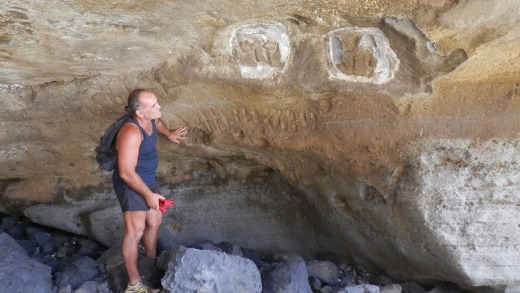
The mutineers set up a township just above Bounty Bay, the remnants of which remain today (Adamstown). I'm driven by quad bike through it, ducking my head between low-hanging bunches of bananas and ripening mangoes, and past banyan and breadfruit trees that grow over the road. We drive beside a meticulously tended mutineer grave and past Pitcairn's only store, which opens for an hour three times a week, providing the island's social highlight. The road here is sealed bitumen, but it soon reverts to a series of narrow, red-mud tracks that steer their way around carefully maintained vegetable patches and neat family homes. Locals sit outside in the gentle morning sun, they wave diligently as we pass, occasionally we stop to say hello and they speak first in Pitkern – a combination of 18th-century English and Tahitian you won't hear spoken anywhere else on Earth.
Being here feels like I'm trespassing on the set of a historical drama, I pass by landmarks with names like Arly Palava, Buffets Reddirt and Ned Young Ground, while above us my eyes are drawn to the dark, foreboding entrance of Christian's Cave – the high point Fletcher Christian would climb to watch for passing ships (which never came in his lifetime).
Visitors mostly choose to stay with local families – my room will be at the top of a hillside dubbed Big Flower – one of Pitcairn's highest. When I walk outside onto a sprawling front lawn I see the island laid out beneath me, beyond it there's nothing but the infinite, blue waters of the Pacific Ocean.
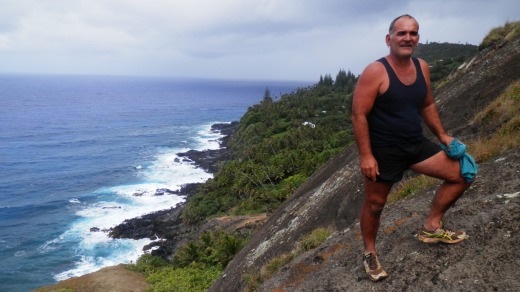
For such a small island there's a lot of places to see. Each day I'm loaded onto a quad bike and deposited at the start of a rambling path. On my first morning Young joins me as we climb around a steep coastline of harsh, black lava; 50 metres below us waves smash into tiny rocky bays. We walk for an hour until we find a formation in the towering cliffs that look just like a cathedral. Beneath it Young shows me drawings and petroglyphs made by Polynesians who lived on Pitcairn centuries before (they have never been documented). "There's probably only about 20 people who have ever seen these," he says. On the return journey we hike down a path to a natural rock pool dubbed St Pauls. The spray from crashing waves wash over me as I paddle in the warm turquoise waters, above me white tropic birds circle in the cloudless sky. Later Young takes me climbing to the entrance of Christian's Cave and we look out across Adamstown. "In winter, the whales are just there," he says pointing 100 metres off shore. "They keep the whole island up at night slapping the water and breaching. We reckon they do it on purpose."
Every bay and every landmark on the island is mine to experience alone – but then, more people will climb Mt Everest in a year than visit Pitcairn Island. In the evenings, locals gather at hastily organised dinners to ask about a life spent far from any island, and to tell me about lives spent on this one. My favourite dinner guest is 'Pirate Pawl' Warren – a gentle giant who sews his permanently cracked heels with thread – he shows off the collection of artifacts he's recovered from the Bounty which lies just offshore, and insists each visitor to Pitcairn joins him for welcome drinks skolled from a humpback whale's tooth.
When we leave the island – the longboat team poised for another battle with the relentless sea – everyone but the oldest and most infirm ride their quad bikes to Bounty Bay to bid us farewell. Out past the breakers I look back at the most isolated and the most eclectic community on Earth. They grin as they wave, happy for the contact with the outside world, but quite content not to play a part in it.
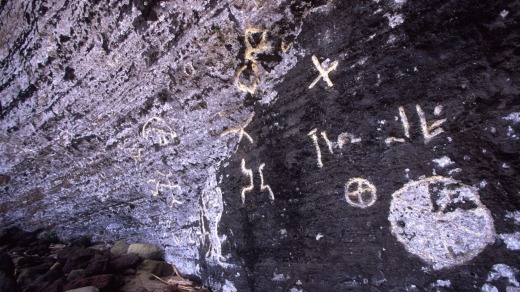
TRIP NOTES
MORE INFORMATION
visitpitcairn.pn
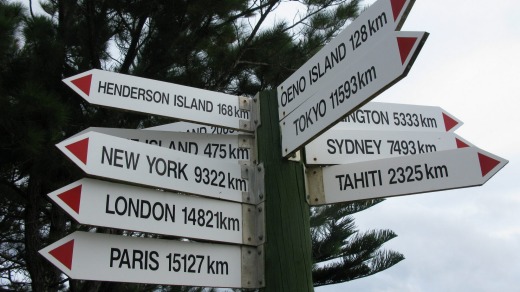
GETTING THERE
Fly to Tahiti via Auckland, see airtahitinui.com.au, then board a weekly flight to Mangareva, see airtahiti.aero. The MV Claymore II sails at least twice every three months (on a Tuesday to connect with the flight), you can choose the amount of time to spend on the island. For booking information see visitpitcairn.pn
STAYING THERE
Accommodation ranges from home-stay experiences to self-contained cottages and holiday homes, see visitpitcairn.pn
CLARIFICATION
In an article in the May 2 edition of Traveller on Pitcairn Island, we failed to mention important information relating to visits to the British Overseas Territory. As a result of sexual assault convictions on the island dating to a 2004 trial, visitors should be aware that there are restrictions in place on children under the age of 16 visiting the island.